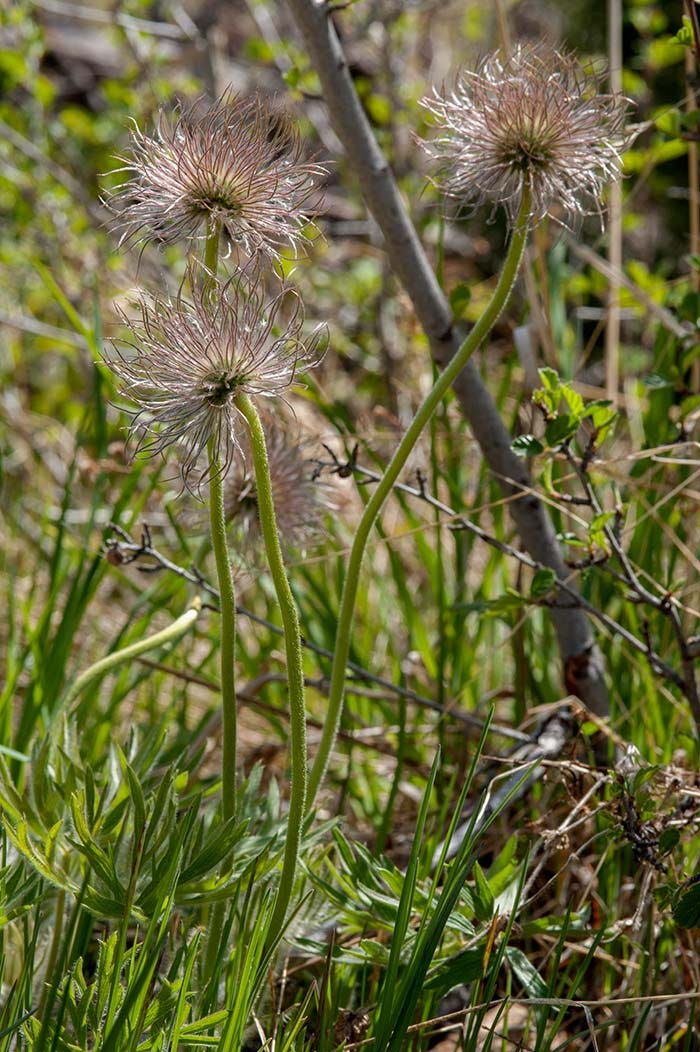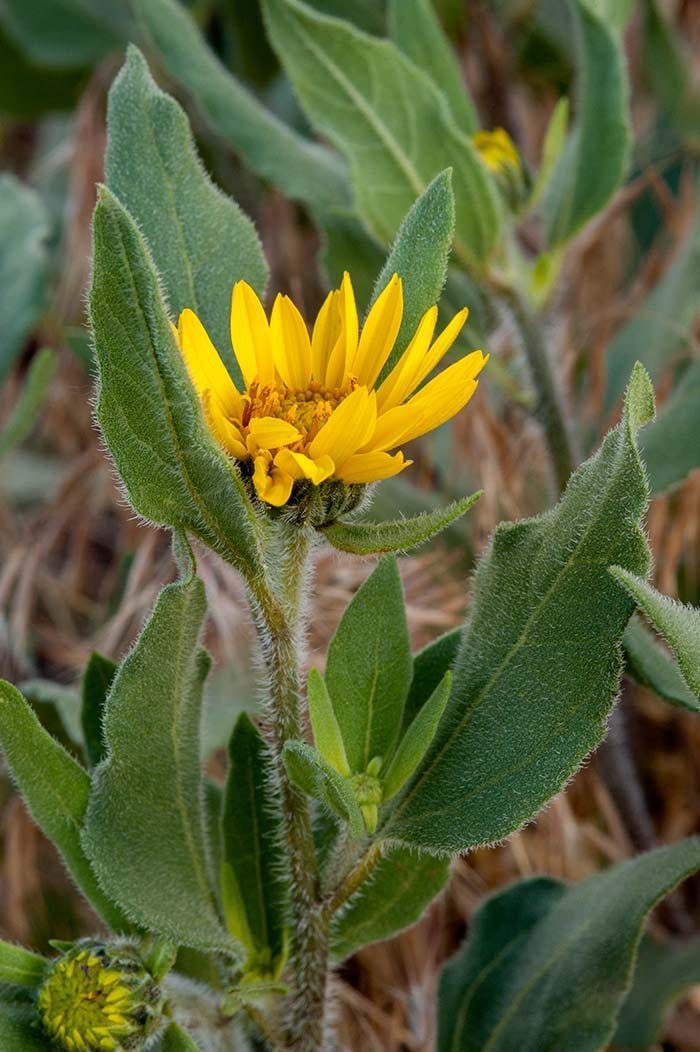The story so far: In 2010, I packed up everything and moved from Tennessee to Colorado, in a motorhome. I have told the story of the trip in earlier posts.
We arrived at Colorado’s “Front Range” in April. The mountains were still under snow, but the High Plains were in bloom. I began with walking trips up Clear Creek from the RV park in Golden at which we were staying.
From the plains to the Continental Divide, there are four distinct biotic zones*, each with its own unique species that have adapted to conditions in that zone. Eventually, we explored them all but this post is mostly about the lowest two.
The first sign of spring in the mountains is the Pasqueflower, aka Crocus. It frequently appears before it has stopped snowing! You see them mostly in the foothills.
By the time other wildflowers have appeared, the croci have already gone to seed, producing these wispy-looking pappuses (pappi?).
There are hundreds of different species of currants in North America, and different ones produce very different flowers, but here is one that was growing just outside the Golden city limits:
I have learned to recognize them by their distinctive leaf, rather than the flowers, because the flowers are so different from one to another.
Wallflowers grow from the plains up into the montane zone:
These are quite common. Note that they have four petals: yep, they’re a member of the mustard family.
Another common wildflower, all over the West, is the Mariposa Lily. There are many different species; here is a Sego Lily in an “Open Space” (kind of like a county park) outside of Loveland called Devil’s Backbone:
The Devil’s Backbone (which I presume used to be someone’s ranch) is an area that is largely undisturbed. I felt like it must be what the High Plains looked like before they were settled. Here’s another denizen of the high prairie:
All of these shots were taken in the low country. We hadn’t even gotten to the high country yet.
—
*From lowest to highest they are: High Plains (about 5,000 feet asl), Foothills, Montane, and Alpine (above timberline, which is about 11,500 feet asl).










"Pappi from what was probably a pasqueflower"
Looks more like a Phyllis Diller flower to me =D
Your knowledge of botany continues to amaze!